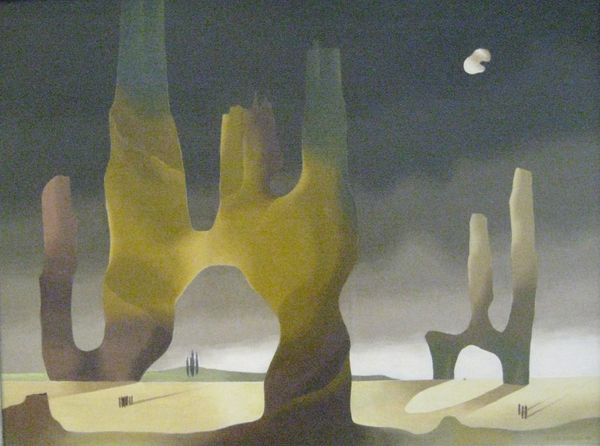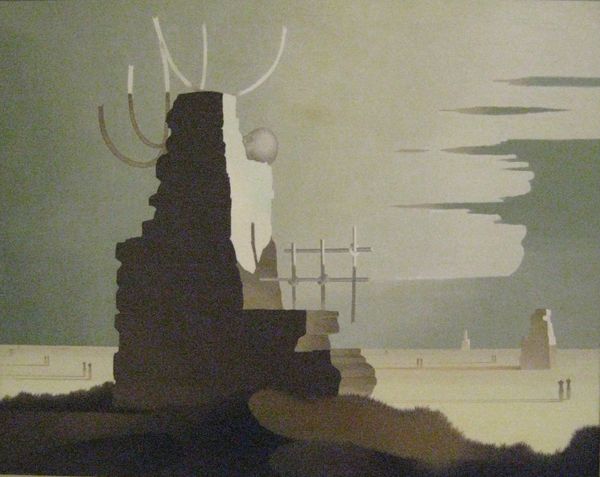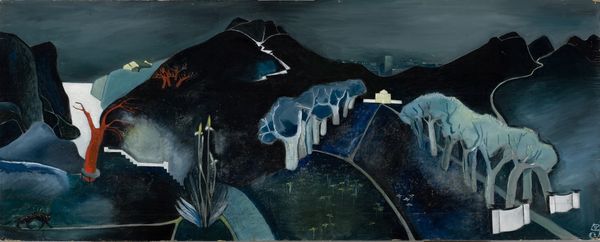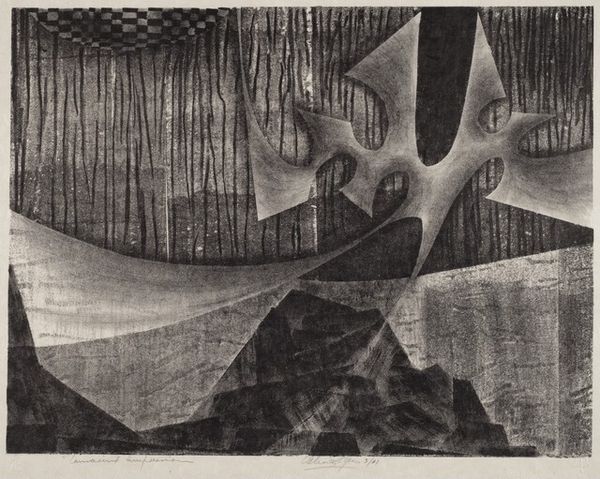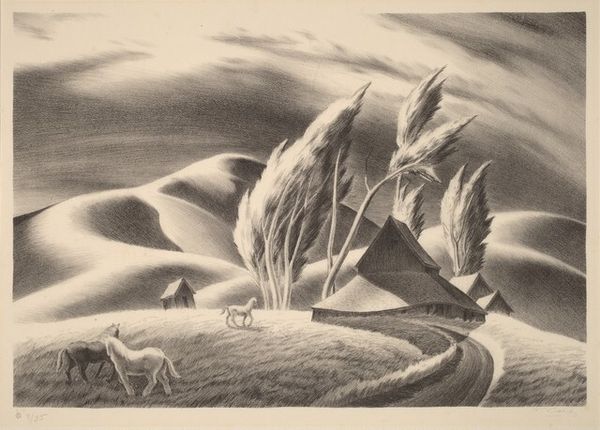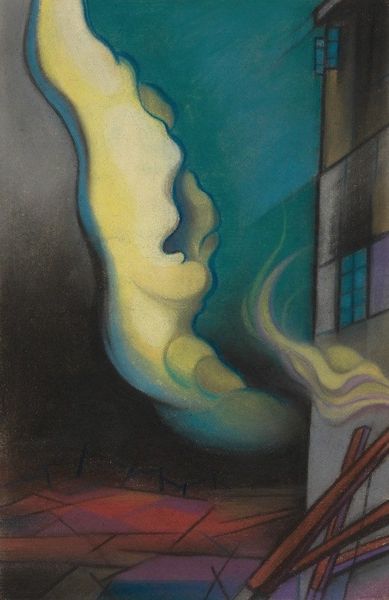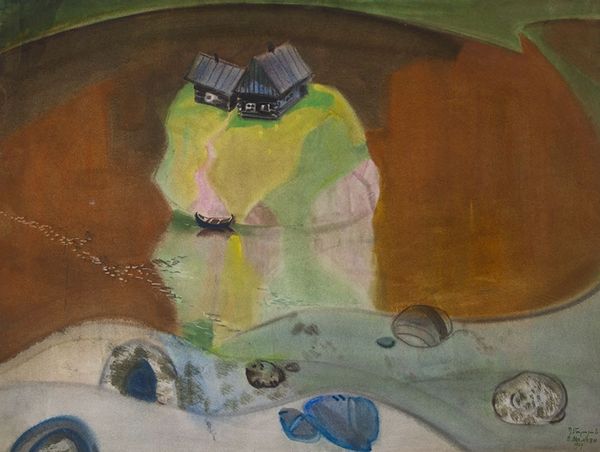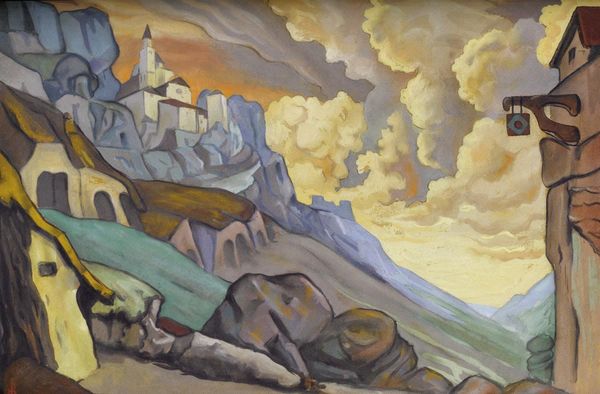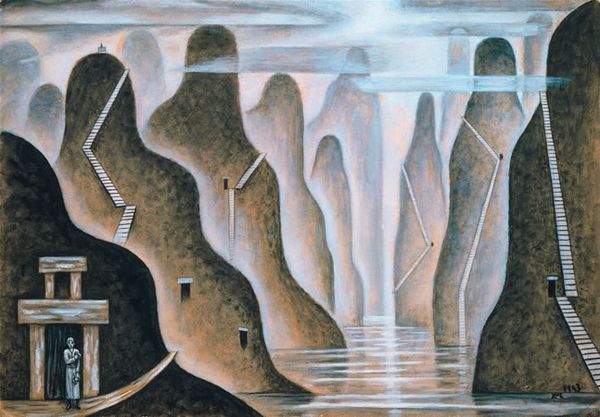
oil-paint
#
gouache
#
oil-paint
#
landscape
#
oil painting
#
geometric
#
surrealist
#
surrealism
Copyright: Sven Jonson,Fair Use
Editor: Sven Jonson's "Solitude," created in 1936 using oil paint, is quite striking. The oversized seashells set against the coastal landscape create a very dreamlike, almost unsettling scene for me. What do you see in this piece, particularly in its historical context? Curator: Well, let's consider what "solitude" might have meant in 1936. This was a period marked by global economic depression and looming war. Do you notice how Jonson uses surrealist techniques to disorient the viewer? Editor: I do, especially the juxtaposition of scale with the seashells and the architecture in the background. The geometry seems deliberate, too. Curator: Exactly! Jonson's use of geometric forms coupled with surrealism can be viewed as a critique of the instability of the interwar period. By creating a landscape that defies natural scale and logic, he comments on a society facing immense upheaval and searching for a new order. Notice also how the architecture seems both ancient and futuristic. Editor: So, the 'solitude' isn't just a personal feeling, but a reflection of societal anxieties? Curator: Precisely! It prompts a reflection on the isolation and fragmentation experienced collectively, influenced by events such as economic strife and pre-war tension. In essence, "Solitude" functions as a mirror reflecting public anxieties of its time, using imagery and symbolic representation to provide societal commentary. Editor: That gives me a whole new appreciation for the artwork. It's not just about personal isolation, but the wider societal context of feeling lost. Curator: Indeed. Considering its place within the era makes it all the more relevant even now, doesn't it?
Comments
No comments
Be the first to comment and join the conversation on the ultimate creative platform.
